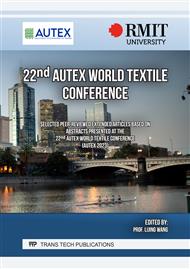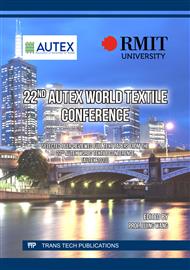p.3
p.15
p.23
p.33
p.39
p.49
p.61
p.67
A Standard Terminology for the Description of Fibrous Microplastics from Textiles
Abstract:
Microplastics, fragments of plastics from regular use, are causing severe environmental hazards and health dangers. They could be ingested by marine animals and further enter the human food chain. Research shows that the majority of the microplastics (35%) released in the environment are from textiles. Therefore, there is an increasing interest in the studies of microplastics released from textiles to control the pollution from their origin. To understand the microplastics released from textiles, the properties of microplastics are important. However, the definition of microplastics is still confusing as most of the studies consider microplastics to have a size of < 5 mm, as defined by Arthur (2009). But microplastics from textiles are mainly in the form of fibre, which is shape dependent. In textiles, microfibre has its definition with diameters measuring < 10 µm. The difference between the two definitions produces confusion and makes it hard to compare results within the literature. Although some researchers proposed terms, such as ‘fibrous microplastics’, ‘fibre fragments’ or ‘fibre shedding’, there is no international consent on the fibre-shaped microplastics till now. This paper endeavours to unite the current terms used for microplastics or microfibre from textile inspection and provide a new definition of fibre-shaped microplastics to avoid further confusion.
Info:
Periodical:
Pages:
33-36
Citation:
Online since:
March 2024
Price:
Сopyright:
© 2024 Trans Tech Publications Ltd. All Rights Reserved
Share:
Citation:



